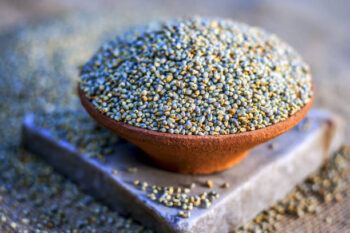In recent years, as people become more health-conscious and aware of sustainable food choices, traditional grains are making a strong comeback. One such ancient grain is Kambu (also known as Pearl Millet), which has been a staple in various cultures, particularly in parts of Africa and Asia. Known for its adaptability and resilience in harsh climates, Kambu has been cultivated for thousands of years, providing sustenance for many generations. However, in the modern food landscape, it is gradually gaining recognition for its health benefits and versatility. Here’s why Kambu deserves a place in your diet.
Nutritional Powerhouse
Kambu is often referred to as a “superfood” due to its impressive nutrient profile. Rich in proteins, fiber, and essential minerals, it is an excellent choice for those looking to boost their health in a natural and holistic way. It’s particularly rich in magnesium, iron, phosphorus, and B vitamins like niacin and folate, which are critical for maintaining various bodily functions, including energy production, muscle function, and red blood cell formation. In fact, Kambu’s high iron content makes it an excellent food choice for those suffering from iron-deficiency anemia.
Another key benefit of Kambu is its fiber content. The grain is packed with dietary fiber, which helps regulate digestion and prevent constipation. Fiber also plays an important role in weight management by keeping you fuller for longer, thereby curbing unhealthy snacking. As a low glycemic index food, Kambu is beneficial for people with diabetes, as it helps control blood sugar levels.
Gluten-Free and Versatile
In today’s world where many individuals have gluten sensitivity or celiac disease, finding nutritious, gluten-free grains can be challenging. Thankfully, Kambu is naturally gluten-free, making it an ideal option for those on a gluten-free diet. Whether you are avoiding gluten for health reasons or simply trying to diversify your diet, Kambu can be used as a substitute for wheat and other gluten-containing grains in many recipes.
Kambu is also incredibly versatile in cooking. It can be boiled, roasted, or ground into flour, making it suitable for a wide range of dishes. From porridge and upma to flatbreads and pancakes, Kambu can be incorporated into both sweet and savory meals. Its mild, nutty flavor pairs well with various ingredients, allowing it to be used in everything from breakfast cereals to salads and baked goods.
A Modern Superfood for All
In a world where food trends often come and go, Kambu stands the test of time. Its impressive nutritional profile, versatility in cooking, and positive impact on health make it a powerful addition to any diet. Whether you’re seeking to manage your weight, regulate your blood sugar, or improve digestion, Kambu offers an all-natural solution. So, next time you’re looking for a new grain to try, why not give this ancient, yet timeless, superfood a place in your meals? Not only will your body thank you, but so will the planet.




